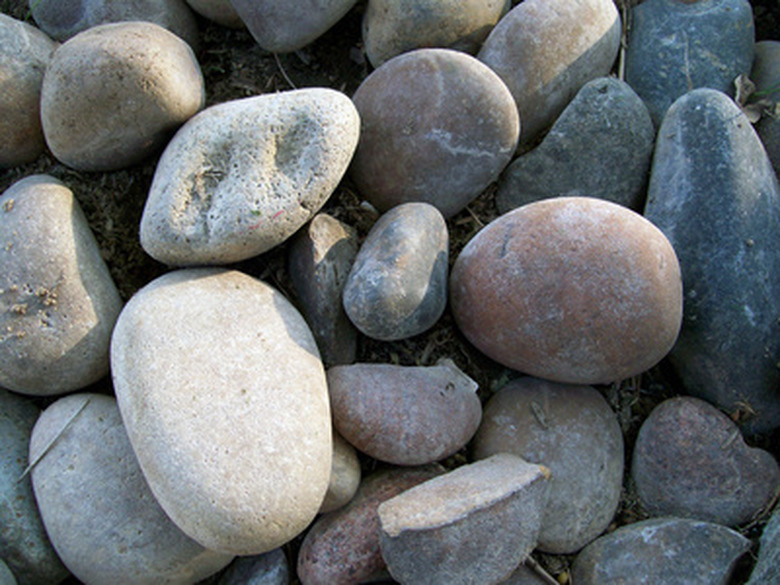List Of Igneous Rocks That Do Not Contain Quartz
Igneous rocks come from cooled and solidified magma, or melted rock. Rocks formed from magma closer to the earth's surface cool more rapidly and create finer grains or crystals within the rock. By contrast, rocks formed from magma underneath the surface develop much coarser and larger crystal grains, due to a slower cooling process. Igneous rocks are classified based upon their textural and chemical composition. Quartz is one of many minerals readily found in many igneous rocks, except for those that have formed too quickly for crystals to develop.
Diorite
Diorite
Diorite forms deep below the crust and contains only dark-colored minerals such as plagioclase, hornblende, and pyroxene. Rarely will this rock contain very small amounts of quartz or light-colored feldspars.
Basalt
Basalt
Basalt is volcanic rock formed from iron and magnesium rich magma that has cooled quickly on the earth's surface. Basalt has very fine grains that are typically dark-gray to black in color. This rock contains minerals such as plagioclase feldspars, augite, hypersthene and olivine, but contains no quartz.
Diabase
Diabase
Diabase is formed as magma is forced between cracks and layers of rock near the earth's surface. Although it develops from the same type of magma as basalt, it cools more slowly, allowing for the formation of larger crystals. This rock is dark green to black in color, and may contain white crystals. Mineral content includes plagioclase feldspars, augite, and possibly hornblende, magnetite, olivine or glass. No quartz is present.
Gabbro
Gabbro
Gabbro also comes from the same low silica content magma as basalt and diabase, yet it cools even more slowly under the earth's crust, allowing for the development of large crystals. Gabbro is dark green to black and contains noticeable crystals that appear larger than rice grains. No quartz is contained in these rocks, yet minerals like plagioclase feldspars, augite, hypersythene, olivine and sometimes, titanite, chromite, ilmenite and magnetite are found.
Pumice
Pumice
Pumice does not contain quartz or any other mineral grains. This is due to the rapid cooling process from explosive volcanic magma. Pumice appears very porous and sponge-like from the many gas bubbles present as it cools. It is very lightweight and will float on water.
Scoria
Scoria
Scoria is smooth and glassy, contains gas bubbles during the cooling process, and is typically dark green to black in color. It is also volcanic in nature, as it forms in lava flows, where it cools quickly before crystals can start to form. Scoria is moderately heavy in comparison to pumice.
Obsidian
Obsidian
Obsidian is volcanic rock that also cools too rapidly for crystal formation, and does not contain quartz or any other such minerals. It is generally black, although it can be variations of gray or green. This rock breaks and chips like glass and may include swirls of color or snowflake-like patterns.
Cite This Article
MLA
Bettmann, Theresa. "List Of Igneous Rocks That Do Not Contain Quartz" sciencing.com, https://www.sciencing.com/list-do-not-contain-quartz-7466806/. 24 April 2017.
APA
Bettmann, Theresa. (2017, April 24). List Of Igneous Rocks That Do Not Contain Quartz. sciencing.com. Retrieved from https://www.sciencing.com/list-do-not-contain-quartz-7466806/
Chicago
Bettmann, Theresa. List Of Igneous Rocks That Do Not Contain Quartz last modified March 24, 2022. https://www.sciencing.com/list-do-not-contain-quartz-7466806/
